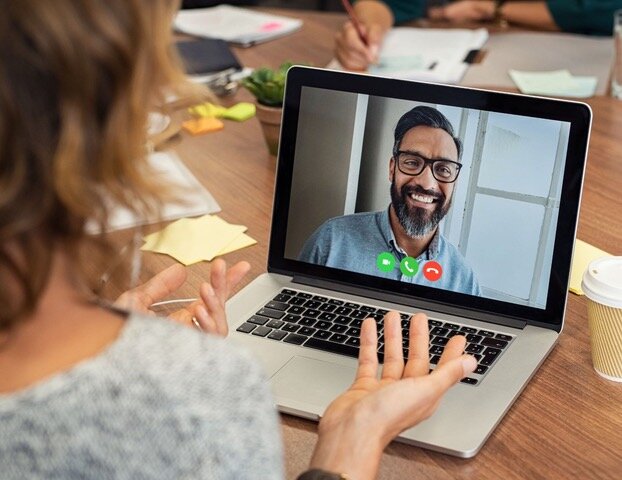How to Standout in a Virtual Interview
The ability to stand out in a virtual interview requires some skills beyond basic job interview best practices.
In this short read, learn how to properly prepare for your virtual interview to give you the best chance possible.
A little bit of knowledge about the equipment and the process can go a long way. Using these virtual interviewing tips and tricks will remove a controllable element from the decision-making process — preventing an interviewer from unconsciously discounting you based on how you appear on camera.
BE PREPARED
Getting yourself set up for success in a video interview setting starts with making sure you prepare ahead of time for any potential pitfalls. Additionally, preparation ahead of time will make you more comfortable and confident
Login ahead of time to test out the platform
Check any download requirements
Get yourself familiar with how you look and sound on camera
Ensure computer audio is properly working
Test your webcam and determine your best posture and positioning
Set your scene: remove distracting items within the view of the camera, stage a clutter-free scene.
Pro Tip: If possible, try to position two lamps or lights on either side of your desk with light source ideally at height of the webcam or a bit higher. This will help cast even lighting across your face to minimize shadows and wrinkles.
Close any unnecessary browser tabs and applications
Make sure you are logged into the interview five minutes early to get ahead of any technical issues
TECHNOLOGY PLATFORMS
There are many different platforms available for virtual interviews (Zoom, GoToMeeting, Google Hangouts, etc). While they all have different aspects and features, the majority of the experience is the same. You receive a link to join the meeting, download any platform specifications or extensions, and are redirected to the meeting. Typically, you will have the choice to dial into a number, or use the microphone built into your device. Note: choose one or the other for audio, don’t do both as it will create an awkward echo situation.
*Note: While all of this is very similar to FaceTime, make sure you are never utilizing a handheld device for video interviewing.
WHAT TO WEAR
You've already tested the camera right? You know what they're going to see and the field of view the camera has. Present yourself as you were showing up to their office to meet. Make sure what the camera sees is what you want your potential employer to see. Like in in-person interviews, try to avoid bright colors or distracting patterns. Colors in the blue family tend to show up best via webcams.
Interruption FREE SPACE
Can't stress this enough. Be it kids, partners or pets, no one wants an interruption. You don't want to break focus, or even have the added stress that an interruption could potentially happen. Oh - and don’t forget to place you phone on silent mode!
EYE CONTACT
In my opinion, this is one of the biggest downfalls of video interviewing.
A lot of the interview is non-verbal by nature. As humans we want the interaction to be genuine and it's hard to get those same cues when we are staring at a screen/camera. There is only so much you can control in a video interview and maintaining eye contact with the camera is one. Use hand gestures when appropriate, and when listening, nod and smile (naturally) to show you are engaged.
COMMUNICATE ANY ISSUES
No one on any side wants to reschedule interviews. A lot of times the interview team would rather push on even with potential interruptions or even without the video in some cases. If you find yourself in a position where you don't think it's possible to find an interruption free space, the internet isn't working properly or any of the other potential issues; reach out to the interviewer and they will be understanding, or reschedule the interview.
FINAL THOUGHTS
Keep in mind: it’s possible that your live video interview will be recorded for others to review. Multiple people could be influenced by your overall presentation in the interview. By mitigating technical, camera, and body-language-related factors, you improve the odds that they will focus on the substance of your answers and what you could do for the company.

